This review was published with kindly permission of TFB Blog
If you ask people what kind of magic gift they would like to have if they could have only one wish, some say they would like to be able to fly like a bird or breathe under water. Others will say they want to play the electric guitar like Yngwie Malmsteen, to be able to paint like Michelangelo or think like Albert Einstein. A few will say that they want to be invisible or to able to see in complete darkness. We all know all those wishes are impossible. Or are they? Pulsar might actually be able to help you with that last thing, and it’s within reach financially for most consumers. Their latest creation is called the Pulsar Krypton FXG50, and it’s a clip-on front attachment for the riflescope(s) that you already own.
| Below: The Schmidt & Bender 5-45×56 PMII is not the ideal partner for a thermal clip-on with a minimum of 5x magnification, but it works. |
 |
Testing the Pulsar Krypton FXG50
TFB got the Krypton FXG50 already by the end of last summer (2020), so our testing has been very extensive over a period longer than 8 months. The unit has been with three different testers and during the time two of my friends also got their own and started to hunt with them actively. All of this experience is baked into this review. We also had the opportunity to compare it with other Pulsar thermals like its smaller brother Proton FXQ30 clip-on and the Thermion 2 XP50, Pulsar’s latest flagship thermal sight.
The battery is external, so you can buy and bring more power if you need to. The Picatinny is not made to attach it to the rifle, but probably for some kind of upcoming accessory.
Overview
The heart of the Pulsar Krypton FXG50 is the new 640×480 @ 12 µm sensor made in USA by BAE Systems. Combined with a 50 mm/1.2 focus lens and an HD AMOLED display, it can detect objects up to 2300 meters away. The IPS7 batteries are said to offer up to 8 hours of operating time, which seems about correct. There are two versions, one monocular for spotting and one with an adaptor for your daytime scope.
The Krypton FXG50 has a fixed optical magnification of 1x and it has no digital zoom at all. Remember that this unit is mainly designed to be mounted in front of your riflescope, so your riflescope will actually be looking onto the display of the Krypton. It means that if your riflescope has a minimum magnification of 2x that is the minimum what you’ll be looking at the screen at. Pulsar doesn’t recommend going over 6x magnification, but I was able to use up to 10-12x and more in some cases. It isn’t recommended, but it worked.
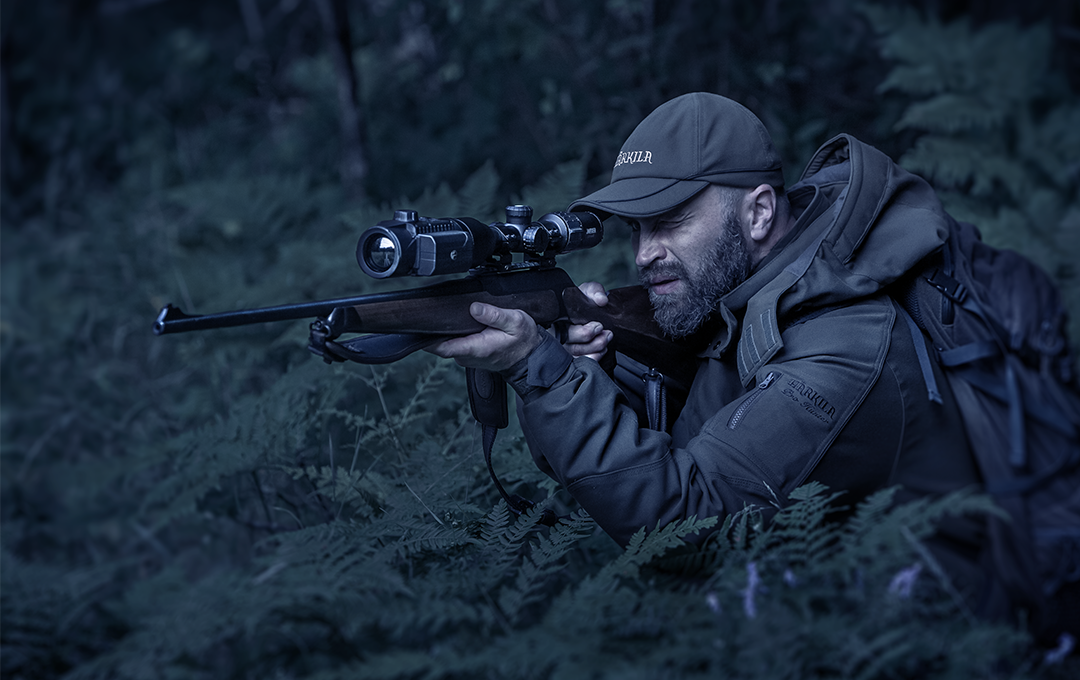
Just remember that as you increase the scope magnification, you will also decrease the image sharpness as you’re actually magnifying into the pixels of the display. According to Pulsar, front attachments like the Krypton and the Proton are extremely complicated to produce, even more complicated than riflescopes. I guess it has to do with keeping the parallax at a minimum and everything completely in-line and flat, as you don’t want any kind of POI (Point Of Impact) shifts at all.
Image Quality
The display is black & white only, which means that you don’t have the usual full-color palette offered by Pulsar on other models. This means that you can use white or black hot mode only, but don’t let this fact let you down. In my opinion, white hot is what offers the best details on an animal anyway, and what most hunters use exclusively anyway. The HD AMOLED display has resolution is 1746×1000 and the image quality is very good. I think Pulsar had to choose between a lower quality color screen or the one they chose here.
On a good night, you will think that you’re looking at a black & white video of whatever is out there in the darkness. Read that again because that’s how good it is most of the time. On a poor night the sensor still delivers, but with fog, rain and other awful things in the air the performance goes down of course. We’ve been out on cold foggy nights and were still able to see details on wild boar.
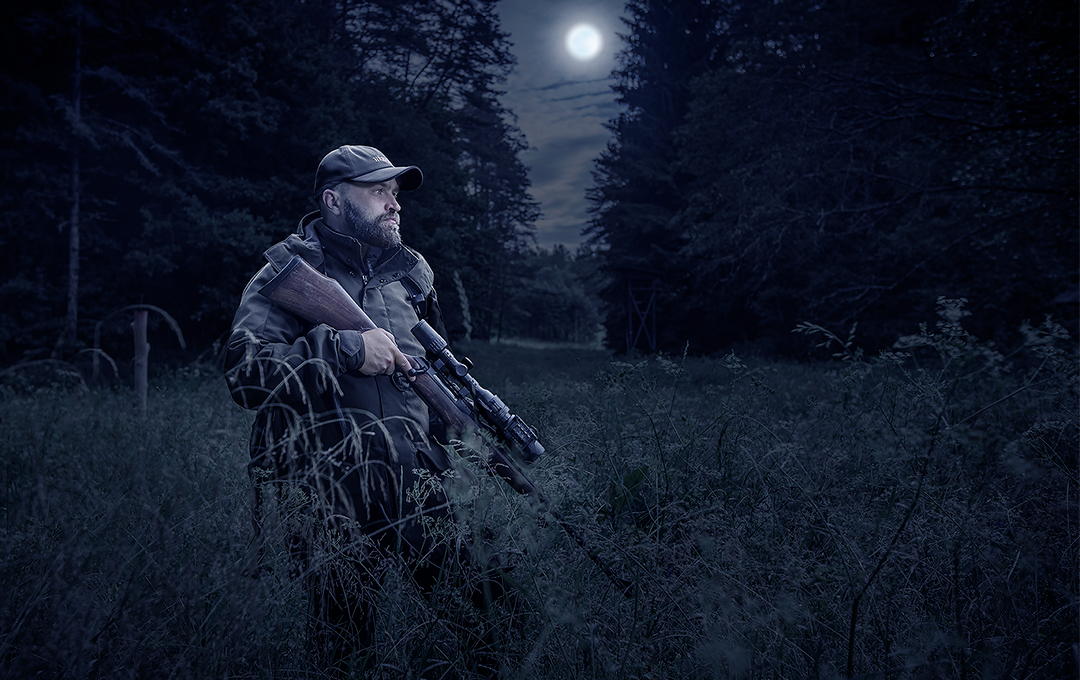
First try – Getting to know the Krypton FXG50
I had the opportunity to go to a shooting range with steel targets from 300 out to 1200 meters. I had just mounted the S&B 3-21×50 EXOS on the Ruger and as this was my first time ever with an MOA reticle, it was quite confusing to get the ballistics right, to say the least. I zeroed the S&B on 300 meters and made some attempts out to 5-600 meters. The GGG .308 Win (168 gr HBPT) ammunition does an amazing job. There was a lot of crosswind so beyond 300 meters, you had to start compensating for the wind. I then put on the Pulsar Krypton FXG50 for the first time “live” and started making the necessary adjustments. You need to adjust the eyepiece, sometimes the parallax and also the focus on the thermal itself and doing this “in the field” at +7 C° is not recommended. As the weather had been like this for a long time, all the steel targets had the same temperature as the surroundings. Poor conditions for thermals that like heat, or at least a difference in temperature between objects. I had just started to get things sorted as the sun came out through the clouds, of course straight into my eyes! I was still able to get hits out to 300 and 500 meters with the thermal attachment. Yes, thermals do work in daylight as well.
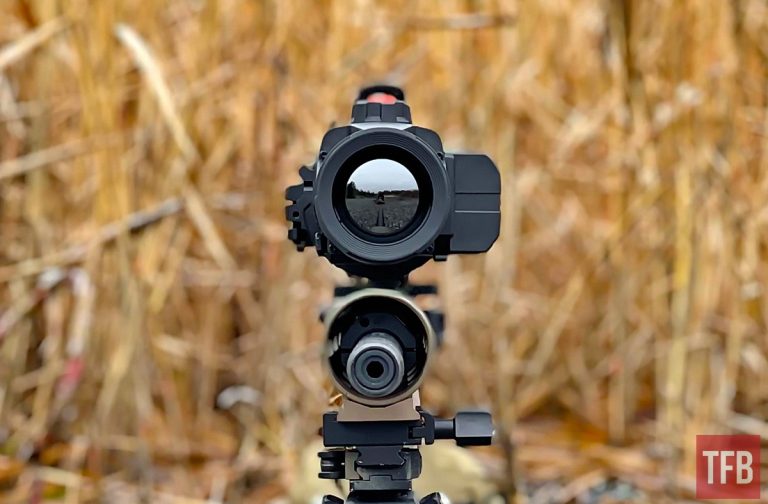 |
| Pulsar Krypton FXG50: Eye in the sky |
How does the Krypton FXG50 clip-on shoot? The most important thing – Does it keep the zero?
So the image quality is great, but how is the Krypton FXG50 to shoot? The simple answer is that it shoots just as good as your main riflescope. In all of our testing it performed great and there were NO issues with shifting points of impact. I can already now see the comments saying that’s not possible for so many reasons, and that’s why I waited for such a long time to write this review.
Hunting is all about trusting your system. We have tested the Krypton on over 8 different platforms.
| Below: I shot 300 meters with acceptable hits, then went back to shoot 3 shots at the thermal pad at 100 meters. That’s three rounds of 6.5 Creedmoor through an AR10. To be honest that’s probably the best group I ever shot with this rifle, ironically with a thermal clip-on in front of the Schmidt & Bender 3-27×56 PMII. |
 |
 |
First three shots at 300 meters. The first shot was a 9, but the two follow-ups were 10/10.

Another goes at 300 meters. That should be around or sub-MOA. JP PCS12 (AR10) in 6.5 Creedmoor and factory Sellier & Bellot ammunition. I don’t really recommend anyone hunting at these distances, but I like to push the boundaries with my target shooting to see what the system is capable of.

Below you can see what the target looked like from the Pulsar Krypton FXG50 at 300 meters. This is the thermal signature of a thin rubber coat (black) on a paper during winter, so not exactly the best opportunity. Still the hits were quite acceptable.

Provoking the Krypton FXG50
Just to make sure, we did our best to provoke the Krypton FXG50 and get it out of its comfort zone. We wanted to see how it really worked beyond the sweet words in the commercials. In this review we have tried and tested no less than three individual Kryptons. We used multiple shooters and multiple platforms. We used a small hand warmer or a Pulsar’s thermal pad at 100 meters as a target.
Below: It was very difficult to take a representative photo of the shooter’s view, but the white dot is the target at 100 meters. The scope is a Schmidt & Bender 3-27×56 PMII with the Pulsar Krypton FXG50 thermal clip-on. I think the magnification is 3x on the S&B and the reticle is not illuminated here.

We shot 2 rounds and took the Krypton off the main scope, re-mounted it slightly offset and shot again and repeated this process but with the offset in all directions. To our surprise the hits were still acceptable. Each square is 1×1 cm and there are 6 hits in the paper (two hole-in-holes).
Can the Krypton fall off if you shoot large calibers and fast semi-auto shooting? Yes, it can, if you make a poor job attaching the adapter. If you mount it correctly, you should be safe.
Below: Even when I provoked the Krypton with the offset below it hit the target. Just follow the reticle of the main riflescope. I don’t think any shooter or hunter would take a shot with the clip-on mounted like this, but they could. However, we recommend that you follow Pulsar’s instructions in the manual.
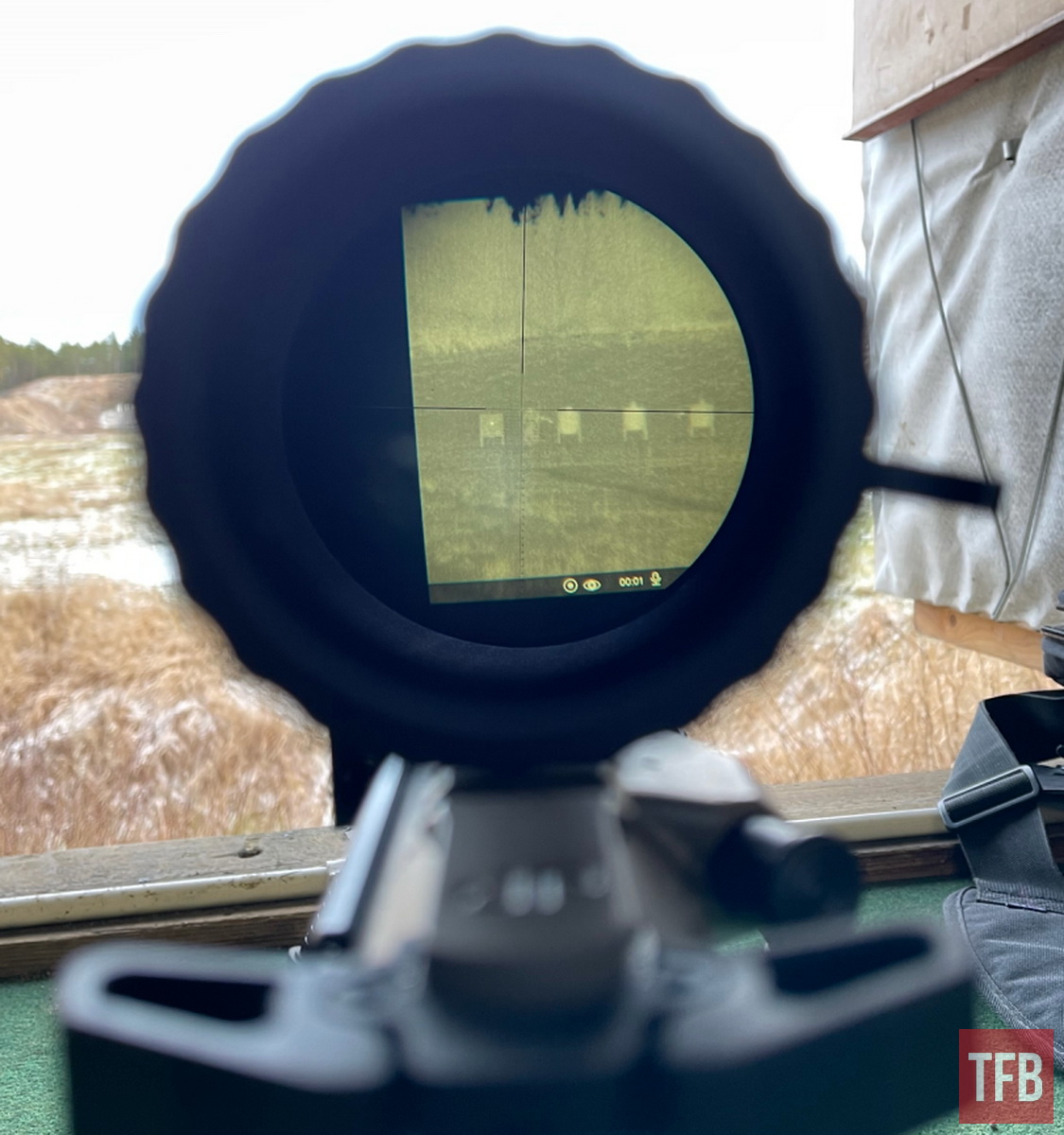
While the extra sunshade and the camo tape might look cool on camera, you should avoid this for several reasons. The sunshade and the tape live their own life during recoil as they’re not fixed to the main scope and the controls of the Krypton FXG50 come out of reach of your hands. The controls are on top of the unit, so it should work well both for left and right-handed users.
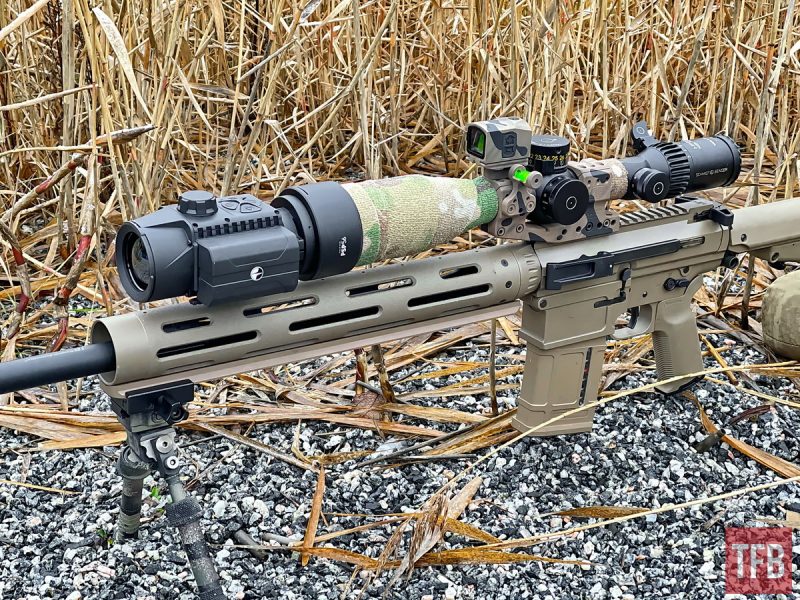
One comment that I’ve seen in many forums and Facebook comments is that if you put a clip-on on your scope it will bend the tube. I found no such proof whatsoever.
Platforms used for testing
- Ruger Precision Rifle .308 Win with a Schmidt & Bender 3-21 EXOS.
- JP Rifles PCS-12 6.5 Creedmoor with a Schmidt & Bender 3-27 PMII
- Browning BAR Match (FN AR) .308 Win with a Schmidt & Bender 1.5-8×42 Stratos
- Sauer 202 .300 Win Mag with an old but gold Zeiss 2.5-10x
- Tikka T3x TAC A1 6.5 Creedmoor with a Schmidt & Bender 5-45×56 PMII
- Remington 700 platform hunting rifle
Picatinny rail – No, you cannot install the Krypton onto a Picatinny rail. I’m sure someone can and will make some kind of adaptor for that, but in my opinion, it is not needed. Just use the adapter(s) that fits your riflescope(s). I think the Krypton FXG50 was developed mainly with European hunters in mind, and most of them have never ever seen an inch of Picatinny.
Adaptors
To mount the Krypton you use adaptors (for 42 mm, 50 mm or 55 mm) for your daytime scope(s), and they worked well. Just as I was typing up the last few words of this review, Pulsar told me there are new and upgraded adaptors on the way, with the precise position of the attachment and they also use a bayonet mount for quick swap between different scopes.
Pulsar has a pretty good video to show how the mounting process is done.
Calibration
Like most thermal devices, the Krypton FXG50 needs to calibrate itself every now and then, and the image freezes for a short while and you hear a clicking sound. You get a count-down on the screen so you can avoid taking a shot at that moment. This process levels the background temperature of the microbolometer and eliminates image flaws. If you move to manual calibration mode, you can avoid the sound but the noise is very low and shouldn’t disturb any animals. I used mine on automatic only.
Videos
Here are some videos to display the performance of the Pulsar Krypton FXG50. As you can see, the recording works really well and there’s 16 GB of space to record. Note that there is no reticle showing, as you’re using the main scope for that.
The Pulsar 5×30 B Monocular
If you want to use the Krypton as a thermal scope (monocular) you can do so. Ideally, you need to use the Pulsar 5×30 B Monocular, which transforms the device into an observation device with 5x magnification. I haven’t tried it, but in general, I prefer a lower magnification for this. To compare the Pulsar Thermal Spotters in the Axion XQ38 series use 4.5 power, and I’d prefer less. The monocular also adds 0,167 grams to the unit, which means that your scope then weighs in at over 0,7 kg. You can use the monocular even if the PSP adapter is in place. Most of the time I used the Krypton just hand-held, but it isn’t recommended in the long run and not how it is intended to be used. Where I live, I can walk around with something looking like a camera in my hand, but not mounted to a rifle. For those looking for a thermal scanner only, I’d recommend that you buy something else. In my opinion, Krypton’s main job is to be a front attachment, but it can be more if you like. Then again, I haven’t tried it with the monocular so perhaps I’m missing something?
Conclusion
In many European countries, it is illegal to use a thermal riflescope (i.e. thermal with a built-in reticle), but since the Krypton is a front clip-on and relies on the reticle of your main riflescope, it can be used legally in more places. In most cases the price is also lower compared to a dedicated thermal riflescope, making it interesting for many hunters. It is also possible to move your Krypton from one rifle to another, which has several benefits.
Pros:
- Very good image quality with 640×480 pixel sensor.
- Trust and peace of mind: Your main scope sets the zero. No need to zero the thermal itself, but should you have an issue it is possible to calibrate the X&Y in the software.
- We could not provoke to any Point of Impact shifts.
- Versatile solution if you want to move the thermal capability from one rifle to another.
- Easy to mount and dismount.
- External battery.
- Easy to use while still offering a lot of settings for the advanced user.
- The user interface (circular) is better than Pulsar’s traditional (my personal opinion, but a matter of preference).
- The unit is Made in Europe. The sensor is Made in the USA.
Cons:
- Black & White color only, but I’m hoping it teaches people that white-hot is best most of the time for hunting.
- Adding a thermal clip-on is a bit abstract. You have to understand that your riflescope is looking at a screen which displays a thermal image.
- Does not work with riflescopes under 42 mm.
- On the limit of adding too much weight to your rifle.

At the end of the day, I had to make a choice between the Krypton FXG50 and the Thermion 2 XP50. They are both excellent choices, but the Thermion 2 suits my needs better. That doesn’t mean you have to make the same choice, because your needs are most likely different from mine. I had a lot of fun with the Krypton and it worked perfectly. Hopefully, Pulsar will let me keep it for a while longer so I can try out the new adaptors as well. My friends love their Kryptons and use them all the time exclusively for wild boar hunting. I’m still surprised how well the Krypton FXG50 performed both in terms of image quality and when we were trying to provoke it out of its comfort zone. We could not prove any shifts in the impacts regardless how carelessly we tried to mount it.
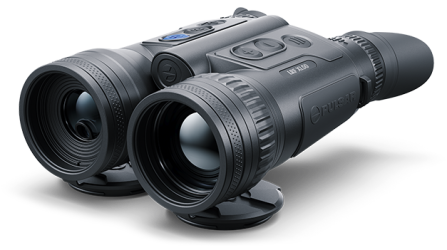 Merger LRF XL50
Thermal Imaging Binoculars
Merger LRF XL50
Thermal Imaging Binoculars
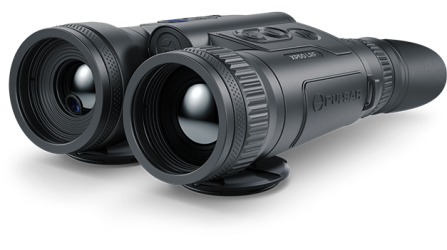 Merger LRF XP50
Thermal Imaging Binoculars
New
Merger LRF XP50
Thermal Imaging Binoculars
New Merger LRF XP35
Thermal Imaging Binoculars
Merger LRF XP35
Thermal Imaging Binoculars
 Merger LRF XQ35
Thermal Imaging Binoculars
New
Merger LRF XQ35
Thermal Imaging Binoculars
New Telos
Thermal Imaging Monoculars
Telos
Thermal Imaging Monoculars
 Axion 2 LRF
Thermal Imaging Monoculars
Axion 2 LRF
Thermal Imaging Monoculars
 Axion 2
Thermal Imaging Monoculars
New
Axion 2
Thermal Imaging Monoculars
New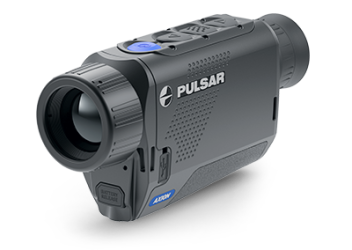 Axion XQ30 PRO
Thermal Imaging Monoculars
Axion XQ30 PRO
Thermal Imaging Monoculars
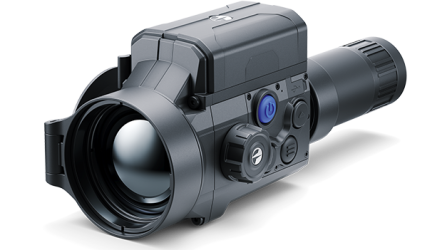 Krypton 2
Thermal Imaging Monocular
Krypton 2
Thermal Imaging Monocular
 Axion XM30F
Thermal Imaging Monoculars
Axion XM30F
Thermal Imaging Monoculars
 APS Batteries
Battery Packs
APS Batteries
Battery Packs
 APS Chargers
Battery Chargers
APS Chargers
Battery Chargers
 IPS Batteries
Battery Packs
IPS Batteries
Battery Packs
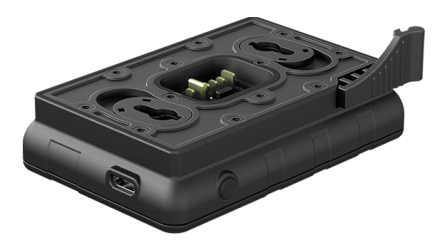 IPS Battery Charger
Battery Charger
IPS Battery Charger
Battery Charger
 Rifle Mounts
for Pulsar Riflescopes
New
Rifle Mounts
for Pulsar Riflescopes
New PSP-V Weaver Rail Adapter
Adapter
PSP-V Weaver Rail Adapter
Adapter
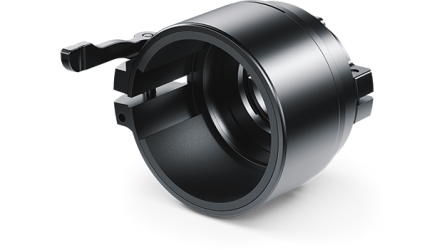 PSP Ring Adapters
Adapters
New
PSP Ring Adapters
Adapters
New PSP-B Ring Adapters
Ring Adapters
PSP-B Ring Adapters
Ring Adapters
 FN Adapters
Cover Ring Adapters
FN Adapters
Cover Ring Adapters
 Remote Controls
for digital devices and thermal imagers
Remote Controls
for digital devices and thermal imagers
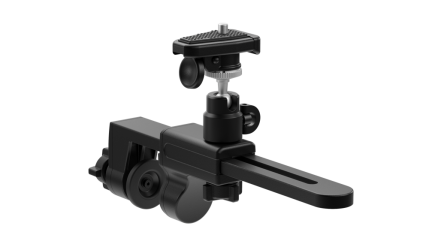 C-Clamp Mount
Pulsar Accessories
C-Clamp Mount
Pulsar Accessories
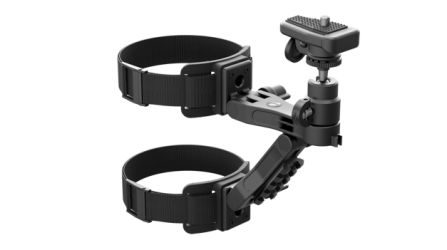 Tree mount
Pulsar Accessories
Tree mount
Pulsar Accessories
 Window Frame Mount
Pulsar Accessories
Window Frame Mount
Pulsar Accessories
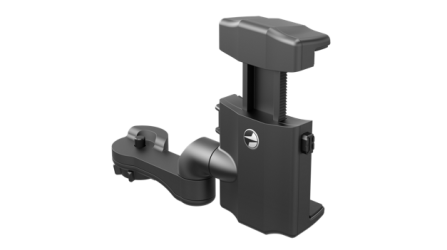 Helion Flip-Up Phone Mount
Pulsar Accessories
Helion Flip-Up Phone Mount
Pulsar Accessories
 Flat Glass Mount
Pulsar Accessories
Flat Glass Mount
Pulsar Accessories
 Neck Straps
Accessories
New
Neck Straps
Accessories
New Monocular Pulsar 3x20 B
Accessories
Monocular Pulsar 3x20 B
Accessories
 Thermal Zeroing Targets
Accessories
Thermal Zeroing Targets
Accessories
 Telos LRF Tripod Adapter
Pulsar Accessories
Telos LRF Tripod Adapter
Pulsar Accessories







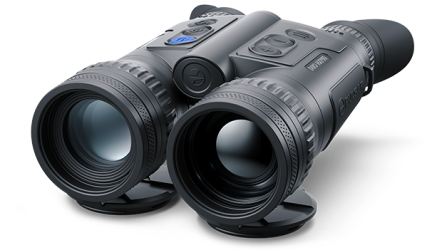

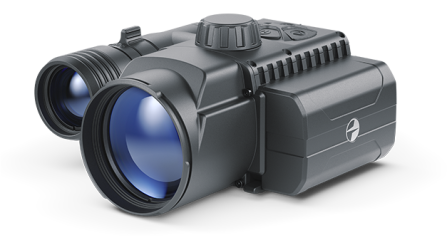




 English
English German
German French
French Spanish
Spanish Italiano
Italiano English
English Lietuvių
Lietuvių













